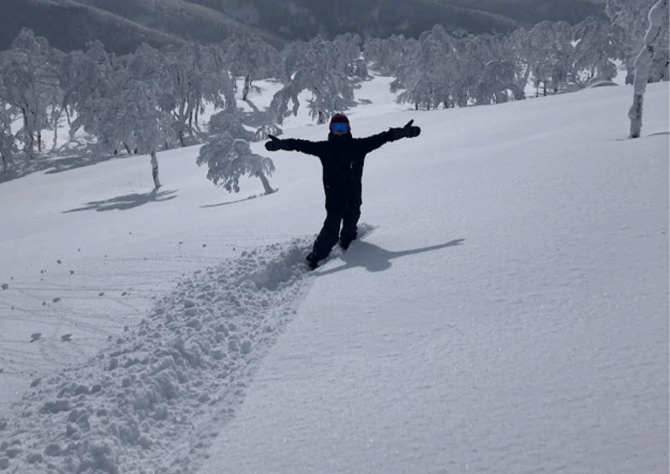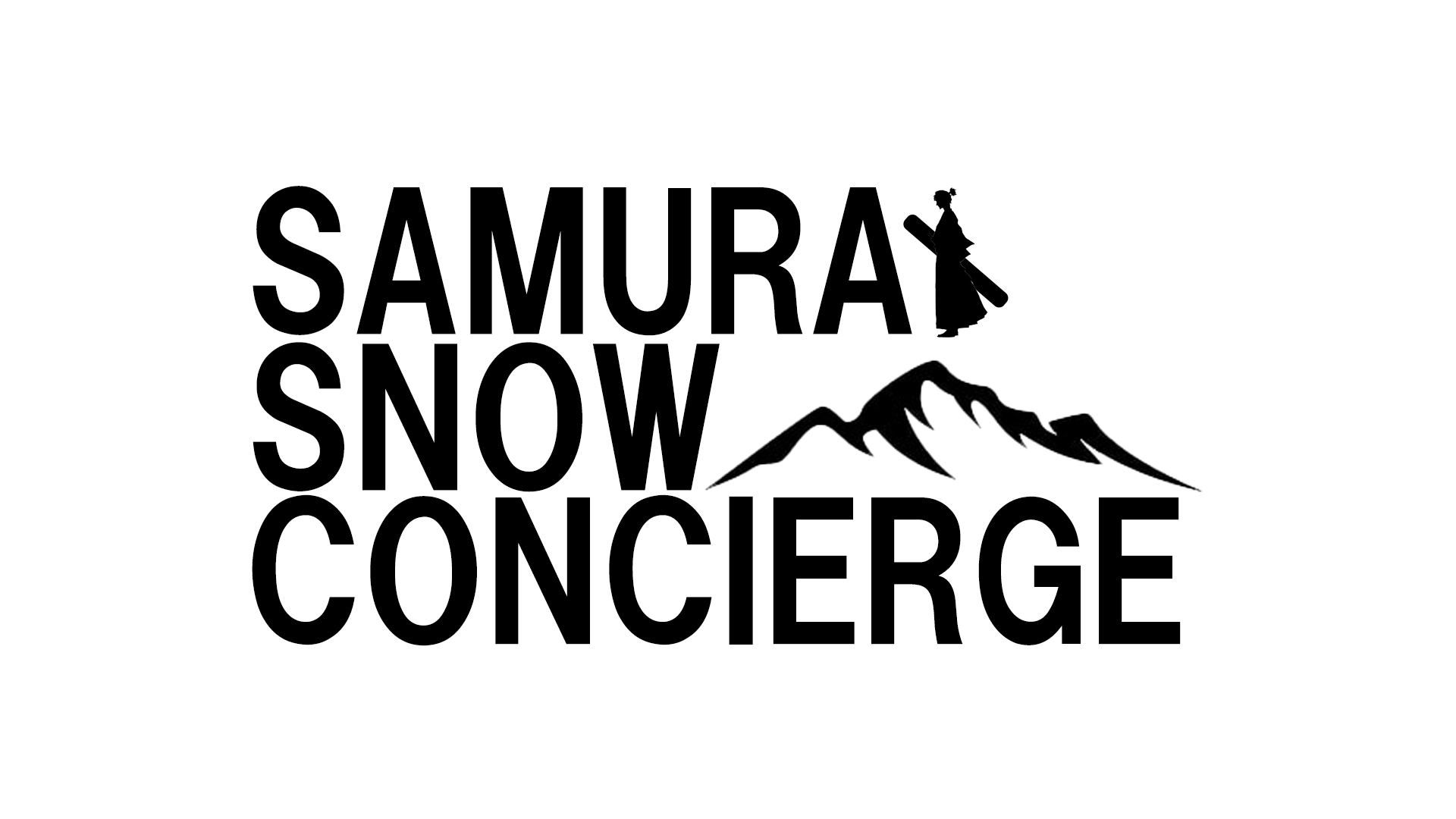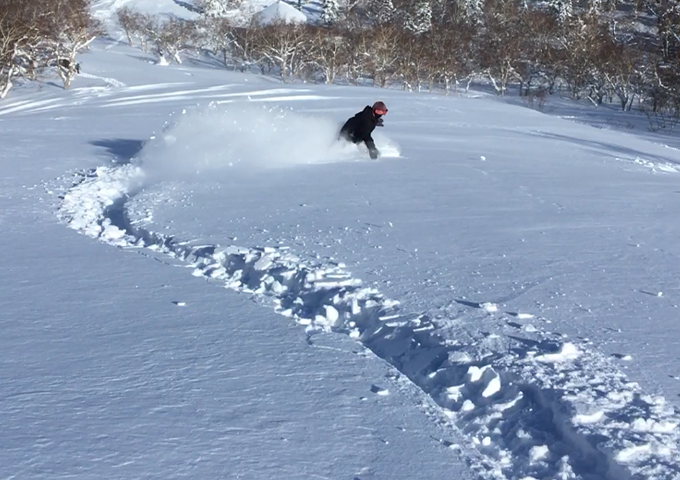When people think of Hokkaido in winter, what comes to mind is the world-famous “champagne powder” that continues to attract skiers and snowboarders from around the globe.
Anyone who has experienced Hokkaido’s legendary powder snow knows the unforgettable floating sensation and sheer joy it brings.
And many riders dream: “Since I’ve come all the way to Hokkaido, I don’t just want to stay on the groomed runs—I want to try the backcountry!”
However, it’s important to remember that the backcountry is essentially untouched wilderness. Avalanches, getting lost, and other hazards are ever-present, and without proper experience and equipment, the risks can be life-threatening.
That’s why, as certified instructors and sidecountry guides, we’d like to share an overview of Hokkaido’s most popular backcountry areas, the risks involved, and—most importantly—why sidecountry riding with a professional guide is a much safer and smarter way to enjoy the very best powder.
If you’re determined to make this the year you fully experience Hokkaido’s deep snow, read on!
Why Backcountry Is So Popular in Hokkaido

Hokkaido’s snow is famously known as “Japow” (Japan Powder). Compared to resorts elsewhere in the world, it’s exceptionally light and dry, offering some of the best riding conditions on the planet.
Even within resort boundaries, the constant snowfall provides bottomless powder. But outside the groomed areas, you’ll find even deeper and untouched terrain that draws skiers and snowboarders from all over the world.
Some of the most popular backcountry spots include:
Niseko (Mt. Yotei area)
A world-renowned powder mecca, Niseko welcomes huge numbers of international riders every year. With its vast off-piste terrain and nearby mountains, it’s a true paradise for backcountry enthusiasts.
Asahidake (Daisetsuzan Range)
Accessible via ropeway up to nearly 2,000 meters. From there, you can either enjoy lift-accessed sidecountry or hike further for full backcountry lines. The dramatic alpine scenery and quality powder make it truly unique.
Furano & Tomamu
Located inland, these areas benefit from colder temperatures that create exceptionally dry snow. Compared to Niseko and Asahidake, they’re less crowded and offer a more relaxed, local vibe.
The Risks of Backcountry Skiing and Snowboarding
Backcountry skiing is not an activity anyone can casually attempt. It carries real dangers, and in the worst cases, can cost lives. Before heading out, it’s critical to understand the risks and prepare accordingly.
Avalanche Risk
The greatest danger in the backcountry is avalanches.
Unstable layers: Weather changes and fresh snow often create weak layers that collapse under even small pressure.
Risky slope angles: Slopes around 30° feel perfect for riding—but are also the most prone to avalanches.
Real accidents: Every year in Hokkaido, avalanche incidents occur, sometimes involving even highly experienced riders.
Getting Lost or Stranded
There are no maps or signs outside resort boundaries. Losing track of your position can quickly become life-threatening.
Whiteouts: Heavy snow and strong winds can erase all visibility in an instant.
GPS isn’t reliable: Cold drains batteries fast, and signals often fail in remote mountains.
Hidden terrain: Snow hides cliffs, creeks, and gullies, making it easy to stray into dangerous areas.
Lack of Equipment and Knowledge
Essential backcountry safety gear includes:
Avalanche beacon (transceiver)
Probe
Shovel
Without these, you can’t rescue a buried partner. And simply owning them isn’t enough—you must know how to use them under real conditions. Sadly, many visitors and beginners enter out-of-bounds terrain without proper gear or training, leading to frequent accidents.
Physical Demands and Harsh Environment
Hiking uphill: Without lifts, you must climb on foot, which is exhausting.
Extreme cold: Temperatures often drop below -10°C, and blizzards can quickly cause hypothermia.
Slow rescue: Unlike on resort slopes, help doesn’t arrive quickly—sometimes it takes hours.
Legal and Management Issues
Backcountry is strictly “at your own risk.” Entering closed or unauthorized areas may result in costly rescue fees. Reckless actions can endanger not only yourself, but also rescuers and other riders.
Why Backcountry Is Risky for Beginners
While backcountry riding is incredibly appealing, diving in unprepared is highly dangerous—especially for first-time visitors to Hokkaido or beginners without proper experience.
That’s why starting with sidecountry terrain, ideally with a guide, is the smartest choice.
The Safer Alternative: Sidecountry

If you’re still eager to ride Hokkaido’s deep powder but don’t want to take extreme risks, sidecountry is the answer.
Sidecountry refers to terrain accessed by resort lifts or gondolas, just beyond the groomed runs. Many Hokkaido resorts allow controlled sidecountry access, making it a much safer option than full backcountry.
Even better, many ski schools offer sidecountry guiding services—a fantastic way to maximize both safety and enjoyment.
Why Sidecountry Is Attractive
Backcountry feel with less effort: You can enjoy untouched terrain with lift access, saving your energy for riding.
Safer environment: You’re never too far from the resort, making it easier to return if conditions change.
Resorts with Great Sidecountry in Hokkaido
Niseko: Extensive ungroomed areas accessible via gates.
Rusutsu: A tree-run paradise with fewer crowds.
Furano: Famous for its superb snow quality and manageable size.
Tomamu: Offers challenging ungroomed zones for advanced riders.
Why Go With a Sidecountry Guide?
You might think, “If it’s safer than backcountry, can’t I just go alone?” But sidecountry still has risks—conditions change daily, and choosing the wrong line can lead to trouble.
Guides provide enormous benefits:
Safety: Professionals manage avalanche risks and route decisions.
Best snow access: Guides know where the freshest powder lies, and adjust routes based on conditions.
Efficiency: Instead of wasting time searching, you’ll spend more of your trip actually riding.
Whether beginner or expert, there are guided tours tailored to every level.
Conclusion
Backcountry in Hokkaido is a dream for many, but with risks like avalanches and getting lost, it’s not something to attempt lightly.
For most riders, sidecountry offers a much better balance: the thrill of ungroomed powder with the safety net of resort access. And with a professional guide, you’ll enjoy the snow more safely, more efficiently, and with far greater satisfaction.
At Samurai Snow Concierge, we’re certified instructors based in Rusutsu, specializing in private lessons and sidecountry guiding.
If you’d like to know more about sidecountry guiding or powder lessons, feel free to reach out—we’d be happy to help you make the most of your Hokkaido powder experience.
We look forward to riding with you!









コメント